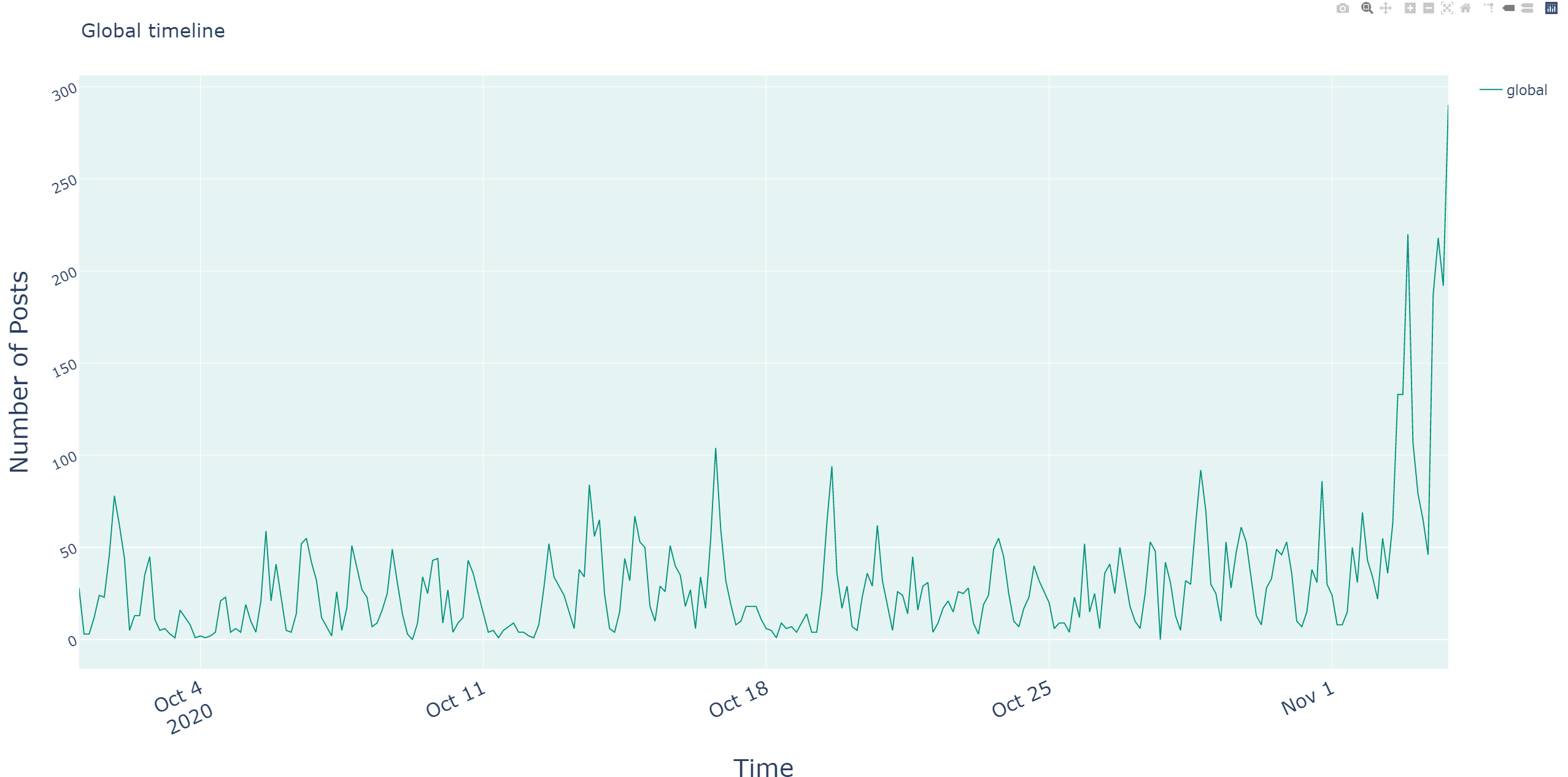#StoptheSteal campaign in the US election reveals dangerous influence of disinformation
Artificial intelligence and journalistic expertise are the basis of a disinformation detection system developed and implemented in a collaboration between pressrelations, NewsGuard and the Fraunhofer Institute for Communication, Information Processing and Ergonomics FKIE. First use case: A qualitative analysis of media coverage of the 2020 US election. The analysis reveals that Donald Trump’s media dominance over his challenger Joe Biden was due primarily to the spread of fake news and disinformation, particularly with the support of untrustworthy media. One issue that stands out in particular was the accusation of election fraud, which was instrumental in paving the way for the storming of the Capitol on January 6.

"Fake news and disinformation are everywhere today, and their unfiltered dissemination through online media is easier than ever. The main goal of this collaborative project is therefore to increase the resilience of society to fake news and influences. The American election campaign has made eminently clear how important this is for maintaining and strengthening our basic democratic order," explains FKIE Research Group Head, Prof. Dr. Ulrich Schade. "The jointly developed approach supports this aim. Its basis is the collection, processing and semi-automated analysis of news items and social media posts through pressrelations, evaluation by NewsGuard of source credibility according to journalistic quality criteria, and an AI-based analysis carried out by Fraunhofer FKIE."
Reporting from trustworthy media is sober and fact-based
The basis of the joint qualitative media analysis, which primarily covered the period from June 1, 2020, to Election Day on November 3, 2020, was a corpus of more than 25,000 online articles from the US and the DACH region (Germany, Austria, Switzerland), TV reports and more than 3,000 tweets by the presidential candidates compiled by the international media monitoring company pressrelations and subjected to initial analysis. The articles, posts and tweets were also assigned a NewsGuard source rating. The 'NewsGuard score' assigns between 0 and 100 points in accordance with weighted journalistic quality criteria. On this basis, the FKIE conducted further analyses using its own AI tool. Initially, the results confirmed the suspected general trends: the more trustworthy the source, the more neutral and factual the reporting on Joe Biden and the more negative on Donald Trump; the less credible the source, the more positive the tenor with regard to Trump and the more negative toward Biden.
AI sniffs out clues to fake-news and influence campaigns
The FKIE tool uses machine learning approaches and examines both the content of the posts and available metadata. The linguistic focus is primarily on the rendering of emotion in the posts and on the occurrence of specific linguistic expressions. Thus, the tool has learned that 'absolutely' is a word that is often used in fake news. Metadata is also important: how often posts are made and at what time of day. A high posting frequency can indicate a bot, while the time of day can offer clues about the country or time zone from which the message was sent.
Even more important than these factors, however, are characteristics derived from network analysis. For instance, what other sources are cited by the social media account doing the posting? What does the follower structure look like? The automated analysis thus offers a useful supplement to the NewsGuard score. If both systems trigger a warning (suspicious content from a suspicious source), the post should be reviewed.
Time patterns are examined for the detection of campaigns. This is based on simple linguistic clustering methods that group media posts by topic for each day. This enables identification of certain topic threads at a very early stage, an insight that is underpinned by the NewsGuard score. With regard to the US election, for instance, it emerged that articles with allegations of corruption and tax evasion against Hunter Biden were initially published by less trustworthy sources starting on October 14, 2020. Only later did the more trustworthy sources also pick up the topic.
Fake-news campaign #StoptheSteal
By contrast, the issue of election fraud through absentee voting, which ultimately led to the #StoptheSteal campaign, was present consistently during the period under observation. It saw a strong uptick on October 24, 2020. In contrast to clearly factual topics, such as the cancelled nuclear agreement with Iran, the proportion of news items from less trustworthy sources was particularly high regarding the topic of 'election fraud'.
Following the November 3, 2020 election, the hashtag #StoptheSteal exploded on social media and became a battle cry among Donald Trump's supporters, some of whom notoriously stormed the Capitol on January 6. This reflects the currently prevailing divide in American society. To overcome this divide, it might be worthwhile to look back into history, "For instance, at the occupation of Washington, D.C. (including the storming of the Capitol) by the British in August 1814, and the courageous role played by the then First Lady Dolley Madison in evacuating the White House, what was important then and could still be important for all US citizens today," says linguistics expert Prof. Dr. Ulrich Schade.
Observation of the 2021 Bundestag election
The collaborative work of pressrelations, NewsGuard, and FKIE will continue during the upcoming Bundestag election with regard to possible influence campaigns using fake news and disinformation. "When performing analysis using our tool, our standard practice is also to include media and news disseminators that do not have NewsGuard scores yet," explains Schade, "because they can have particular relevance to the launch of corresponding campaigns on social media."



